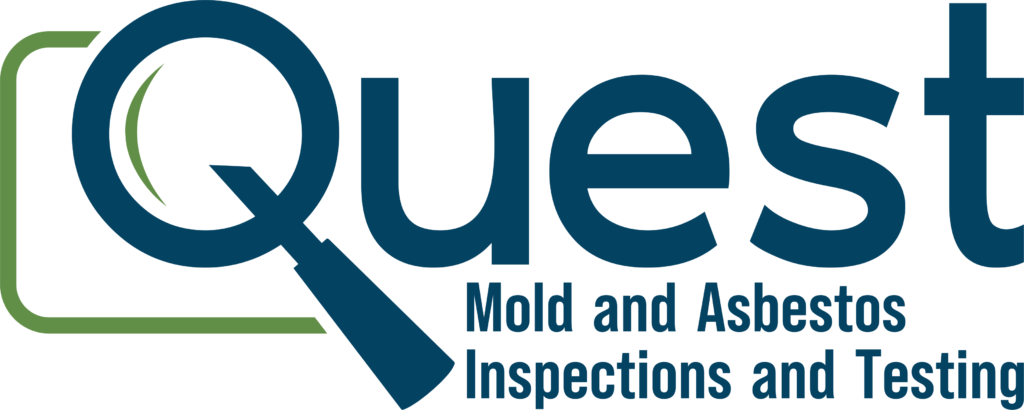If molds could speak and be honest, they love lurking around your home and you are even unaware. They love to multiply & silently impose health risks. Unattended, mold gets into the structure of the building ruining part of the house & causing high expenses & risks.
Quest Mold & Asbestos Inspections and Testing is here to help you understand how mold affects the infrastructure of the building.
What Is Mold & What Causes It to Grow?
The United States Environmental Protection Agency(USEPA) states that molds can be found almost anywhere that moisture & oxygen are present. That only means that even in the dry areas of your home, molds can still be there.
The majority of mold is harmless in small amounts, but if it multiplies and covers around 60% of your home, it might be more challenging.
Mold needs the following things to grow:
- Moisture – Leaking pipes, roof leaks, or standing water.
- Organic Materials – Mold feeds on materials like wood, drywall, insulation, & carpets.
- Poor Ventilation – Bad airflow can trap moisture & can create the perfect environment for mold.
- Temperature – Mold thrives between 60°F & 80°F (Room Temperature)
How Does Mold Damage Your Home?

Mold causes structural damage by feeding on organic materials. It breaks down these materials to get nutrients, which weakens them. Over time, this can affect the strength & stability of your home.
- Wood Rot & Decay
Mold loves to grow on wood. Molds rapidly grow when the wood gets wet. Mold breaks down the fibers in wood, making it soft & weak. This can lead to:
- Soft wood that can’t hold weight.
- Cracked or splintered wood beams & floorboards.
- In severe cases, walls or ceilings collapse.
- Drywall Damage
Mold can grow on drywall too. As it grows, it weakens the paper & gypsum inside, causing:
- Walls that crumble or fall apart.
- A loss of insulation makes your house less energy-efficient.
- Mold spreading to other areas.
- Insulation Problems
Mold can also grow on insulation, which helps keep your house warm. Moldy insulation can:
- Make your insulation less effective, raising your energy bills.
- Cause other parts of your home to weaken.
- Foundation & Basement Issues
Mold loves basements & foundations because they are often damp. Mold can:
- Weaken concrete by making cracks worse, letting water seep into the structure.
- Attract pests like termites, which can cause even more damage.
The Hidden Costs of Mold Damage
Mold damage is dangerous & at the same time, expensive. Even home renovation experts say water & mold claims could become more prevalent as severe weather events, especially windstorms & flooding, become more common or more powerful as reported by CNBC.
The Insurance Information Institute even reported that mold & water damage account for about 22% of all home insurance claims in the U.S. Mold cleanup can cost between $500 to $10,000!
Besides the cost of fixing the damage, you should also think about these hidden costs:
- Lower Property Value – Homes with mold problems are less valuable & harder to sell.
- Health Costs – Mold is considered one of the leading causes of breathing problems & allergies, leading to higher medical bills.
- Higher Insurance Costs – Homes with a history of mold damage may face higher insurance monthly payments.
How to Prevent Mold Damage
Quest Mold and Asbestos Inspections and Testing stands by the principle that prevention is far better than cure. Here are our recommended ways you can protect your home and family:
- Fix Moisture Problems Right Away
- Repair leaks in the roof, walls, & plumbing.
- Make sure water drains properly around the foundation.
- Use dehumidifiers in damp areas like basements.
- Improve Airflow
- Install exhaust fans in kitchens & bathrooms.
- Open windows to allow fresh air to reduce moisture.
- Inspect Your Home Regularly
- Check for water damage in places like basements & bathrooms.
- Watch out for obvious signs like discoloration or a musty smell.
- Use Mold-Resistant Materials
- When renovating, use mold-resistant materials like drywall & insulation.
- Special coatings should be applied to wood to stop mold from growing.
- Hire a Professional for Mold Testing
- Get experts to check for mold in your home.
- Professionals can safely remove mold & prevent it from coming back.
Why Choose Quest Mold & Asbestos Inspections?
Quest Mold and Asbestos Inspections specializes in finding &fixing mold problems before they cause serious damage. Some of our top services include:
- Mold Testing – First, we perform tests to check if mold is in your air or on surfaces. Quest Mold and Asbestos Inspections and Testing uses only the best tools and brand to collect samples.
- Clear Reports – We will also give you a no-brainer report about mold that is present in your home.
- Expert Help – Lastly, our team can guide you on how to fix mold issues & keep them from coming back.
We serve homeowners across New York, offering professional & reliable services.
Conclusion
To be honest, mold is a danger to your property & it may also threaten your family’s health. You can prevent all the headaches on repairs and can also live in healthy conditions by understanding the risk of mold growth and taking appropriate actions.
If you are in need of mold professionals to help you with mold testing and inspection, call us today at Quest Mold and Asbestos Inspections and Testing at 917-277-7580 or schedule an appointment at Quest Testing Appointment.

